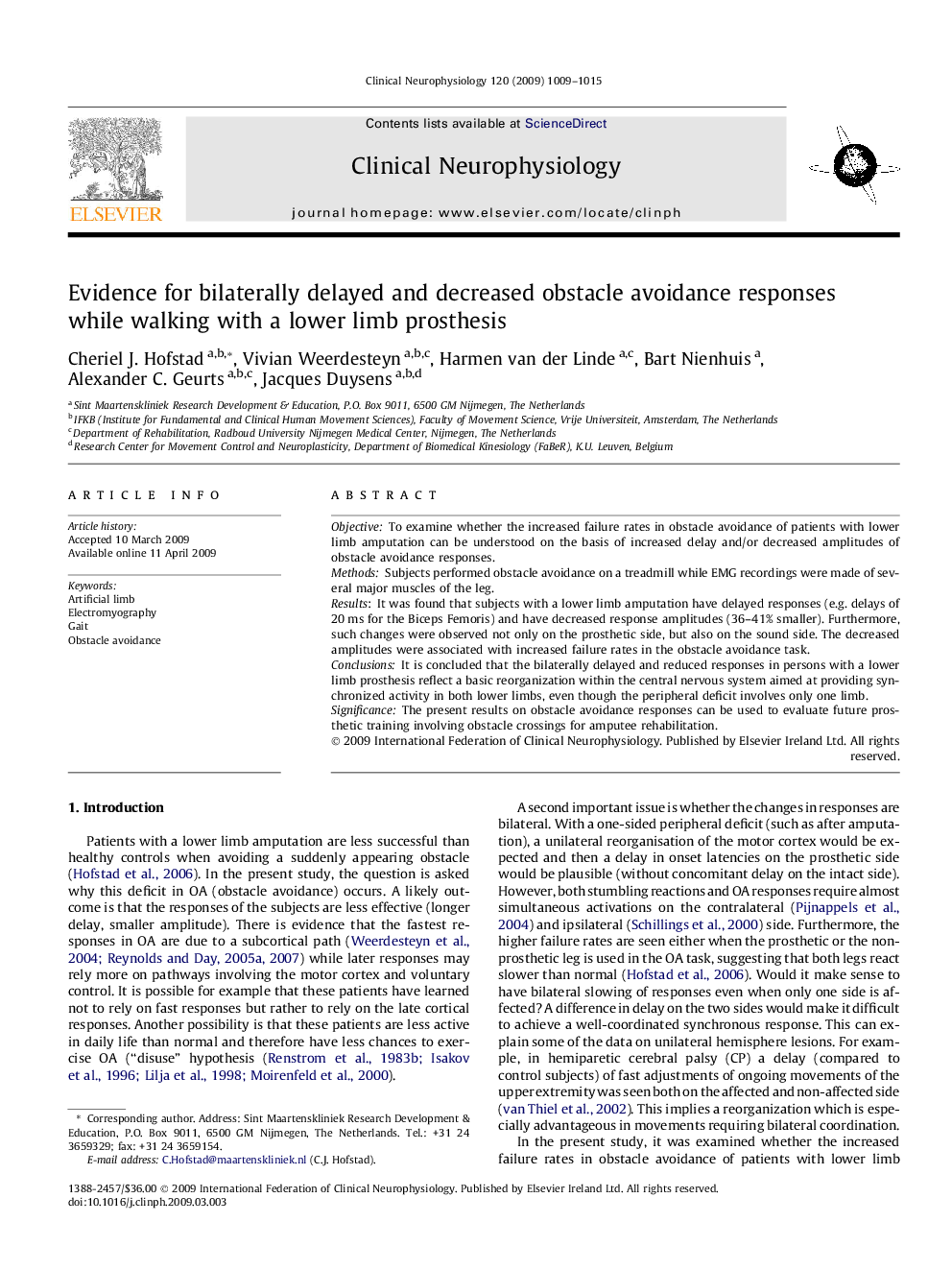| Article ID | Journal | Published Year | Pages | File Type |
|---|---|---|---|---|
| 3046061 | Clinical Neurophysiology | 2009 | 7 Pages |
ObjectiveTo examine whether the increased failure rates in obstacle avoidance of patients with lower limb amputation can be understood on the basis of increased delay and/or decreased amplitudes of obstacle avoidance responses.MethodsSubjects performed obstacle avoidance on a treadmill while EMG recordings were made of several major muscles of the leg.ResultsIt was found that subjects with a lower limb amputation have delayed responses (e.g. delays of 20 ms for the Biceps Femoris) and have decreased response amplitudes (36–41% smaller). Furthermore, such changes were observed not only on the prosthetic side, but also on the sound side. The decreased amplitudes were associated with increased failure rates in the obstacle avoidance task.ConclusionsIt is concluded that the bilaterally delayed and reduced responses in persons with a lower limb prosthesis reflect a basic reorganization within the central nervous system aimed at providing synchronized activity in both lower limbs, even though the peripheral deficit involves only one limb.SignificanceThe present results on obstacle avoidance responses can be used to evaluate future prosthetic training involving obstacle crossings for amputee rehabilitation.
